Emma Brante,
Creative Director, Graphic Designer
Founder, Partner
Let us tell you a story… The story of our collaboration with the Bollinger group, created in 1829 by the Bollinger champagne House. Between family transmission and cultural heritage, we invite you to discover the backstage of the creation of the brand identity and new corporate website that we imagined for this exceptional group.
What was the starting point of the project for the Bollinger Group?
The starting point was a brief. A brief is a magic box, a mix of « everything is possible » + « beware, you can’t just create anything you want that looks beautiful 🙂 ».
The group had been existing for decades and it was until now a discrete financial holding. As the group was becoming more important, welcoming new Houses, questions appeared internally as well as the desire to exist publicly as a group. Our mission was to create the public image they needed without overshadowing the brands. A visual and editorial line to express their values, the reputation and aura of their brands.
In phase one of our work, we built the identity language of the group: its name, its logo, its slogan and a universe. We continued this work in the same spirit in order to deploy and implement the new vision and identity of the group.
What were your inspirations for the new corporate identity of this independent family-owned group?
A group is the voice of a culture. For the Bollinger Group, we wanted something soft and inspiring – and therefore human – as opposed to a cold financial institutional image. Something that is close to nature.
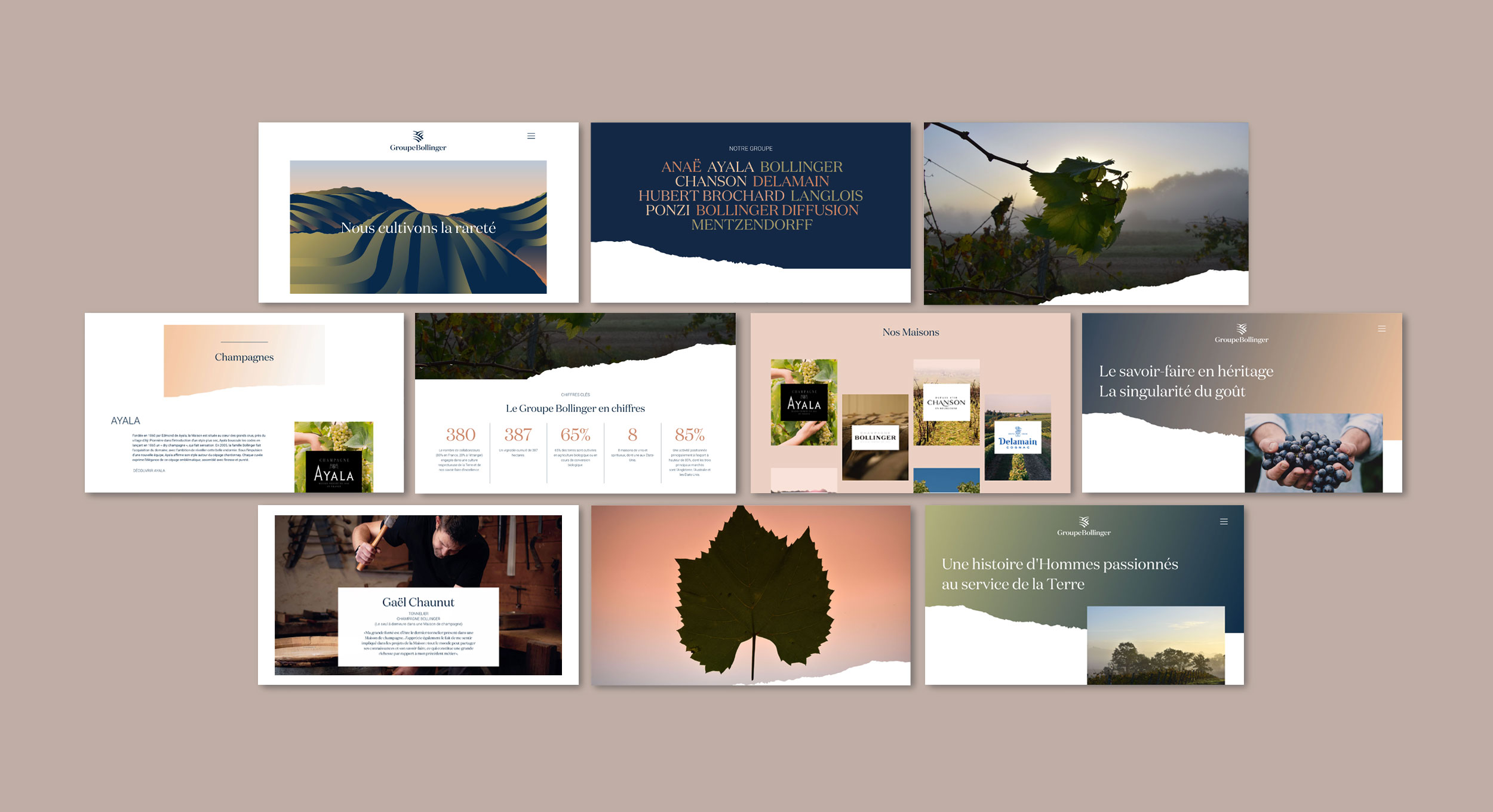
What was the logo design process?
The lines drawn by the cultivated fields, so typical of the vineyards. This was the starting point. This landscape is one of the first images one has in mind when imagining vineyards. The second idea was to find a symbol to represent the historical dimension of these Houses. A character of nobility and belonging. The shape of the logo refers to a shield. And the last idea was to signify the concept of land in the sense of an estate, a property.
This logo is the final association of this landscape in the shape of a blazon.
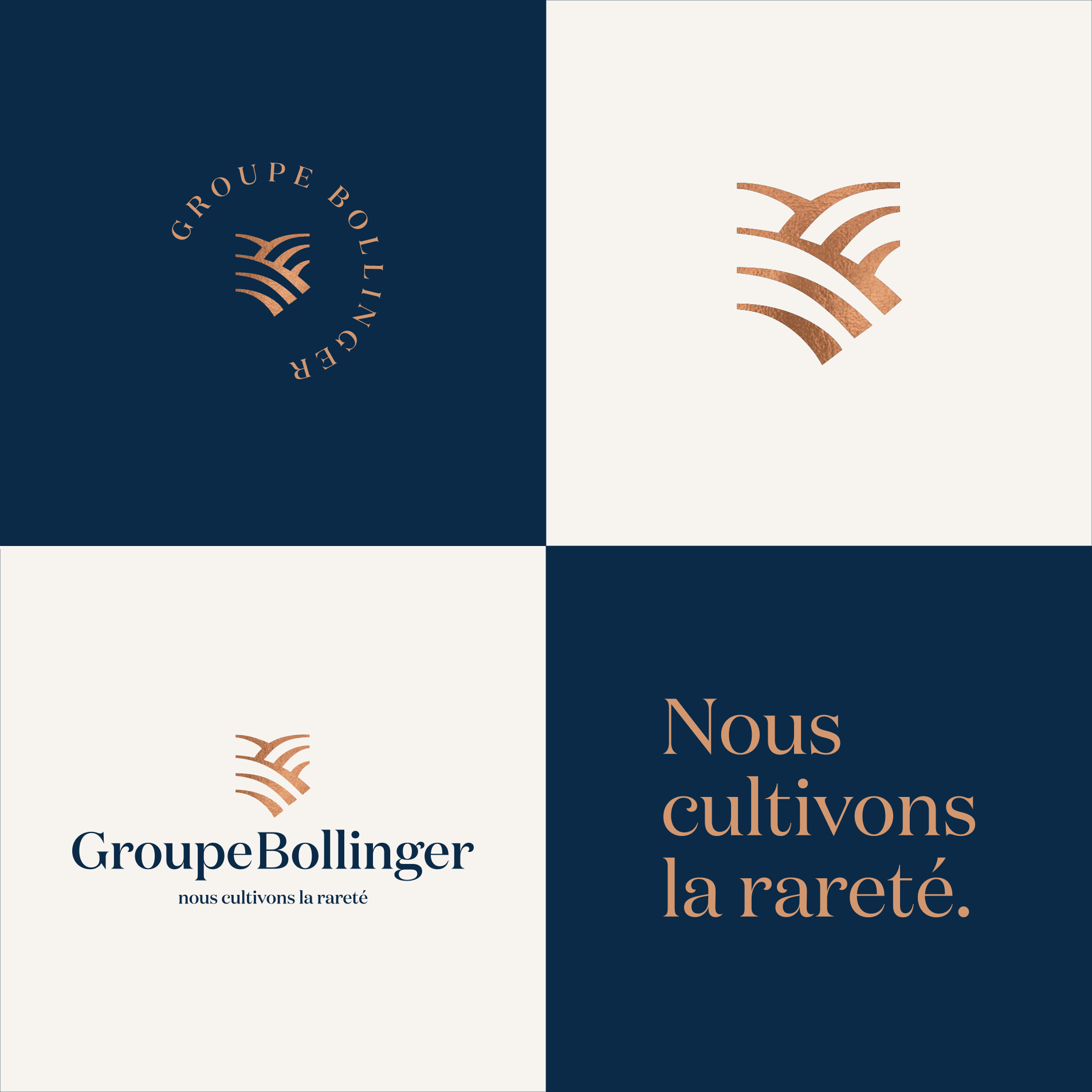
“Cultivating the Rare”: how does this baseline represent the vision and history of the Bollinger Group?
The group had a baseline which was « Families of rare wines ». Having integrated new spirits brands, this phrase no longer represented them. The heart of it was the word « Rare ». And then, associated to the idea of a « culture » and playing on the multiple meaning of this word that carries many rich ideas such as: the idea of an identity, the patrimonies and the cultivation of the land, we created that baseline « Cultivating Rarity ».
This slogan also has an ecological dimension and evokes a respect for the Earth
How did the Bollinger Group website come to life to look like it does today?
A group is not a brand, it’s an institution. As for any serious major institution, the visual grammar must be rich and creative in order to convey a sovereign image. The website revolves around the idea of landscapes and the richness of the land. We created graphic landscapes and designed colored hills with ripped paper.
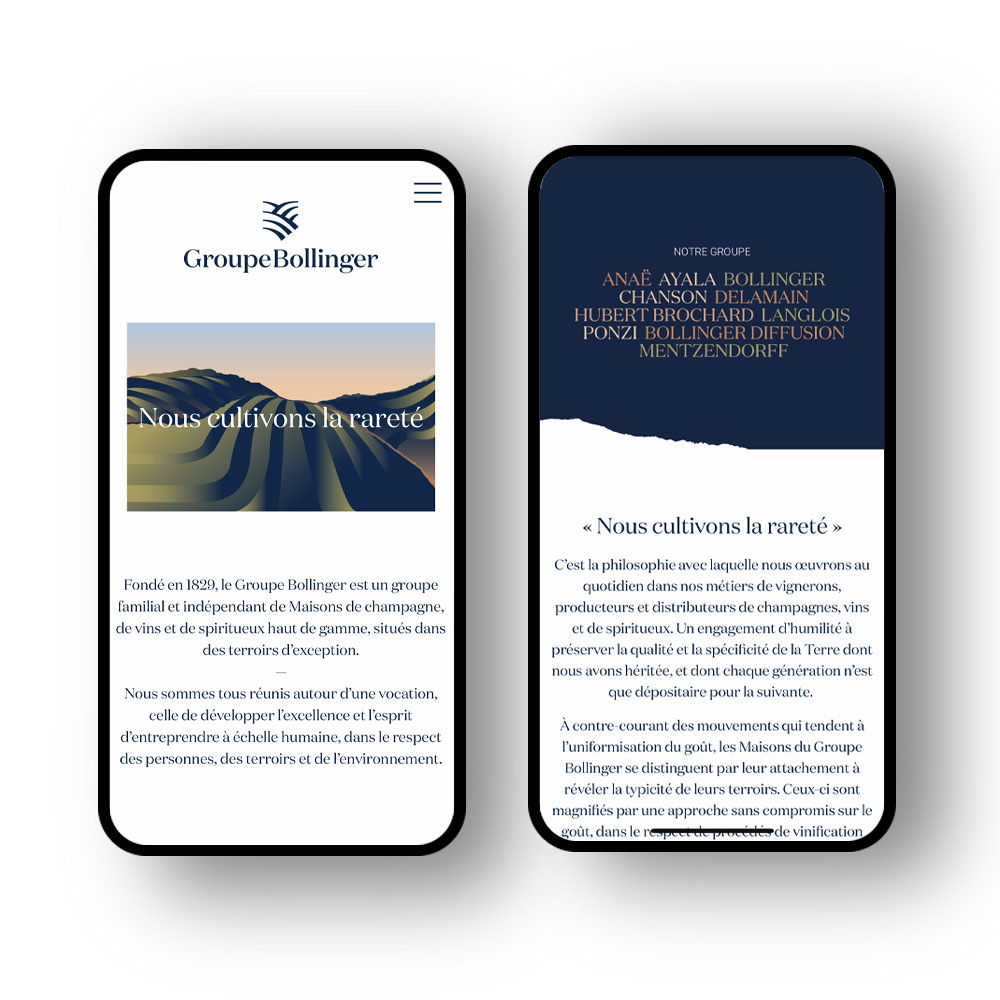
What were the challenges in developing this corporate website?
This website is a flag in the colors of the group’s ambitions and the “extra-ordinary” quality of its Houses.The website allows the Bollinger Group to present itself and address thousands of people at the same time and not just to isolated interlocutors.
Its goal is to shows the foundations of a serious institution and it indirectly generates interest among the Houses. It highlights the brands and entities and can arouse curiosity. The Group’s website makes it possible to say everything that the brands cannot always express.
A photographic coverage was done to illustrate the Bollinger Group corporate website. How would you define the artistic direction of this shooting?
We built the entire identity around landscapes. We had created graphic forms that evoked landscapes playing with colored gradients. The render was a very soft visual feeling.
We shot a series of different landscapes, fields of vineyards. The photos were taken at dawn, bringing to us a mysterious rich light and revealing the magic that only nature can provide.
Each photo is a piece of this nature that carries universal ideas. Swarms of birds, mist invading vineyards, sun rising in the hills, the humidity of the night on the vine leaves. We wanted to recreate the feeling of the scent that the earth has when it is filled with the humidity of the night.
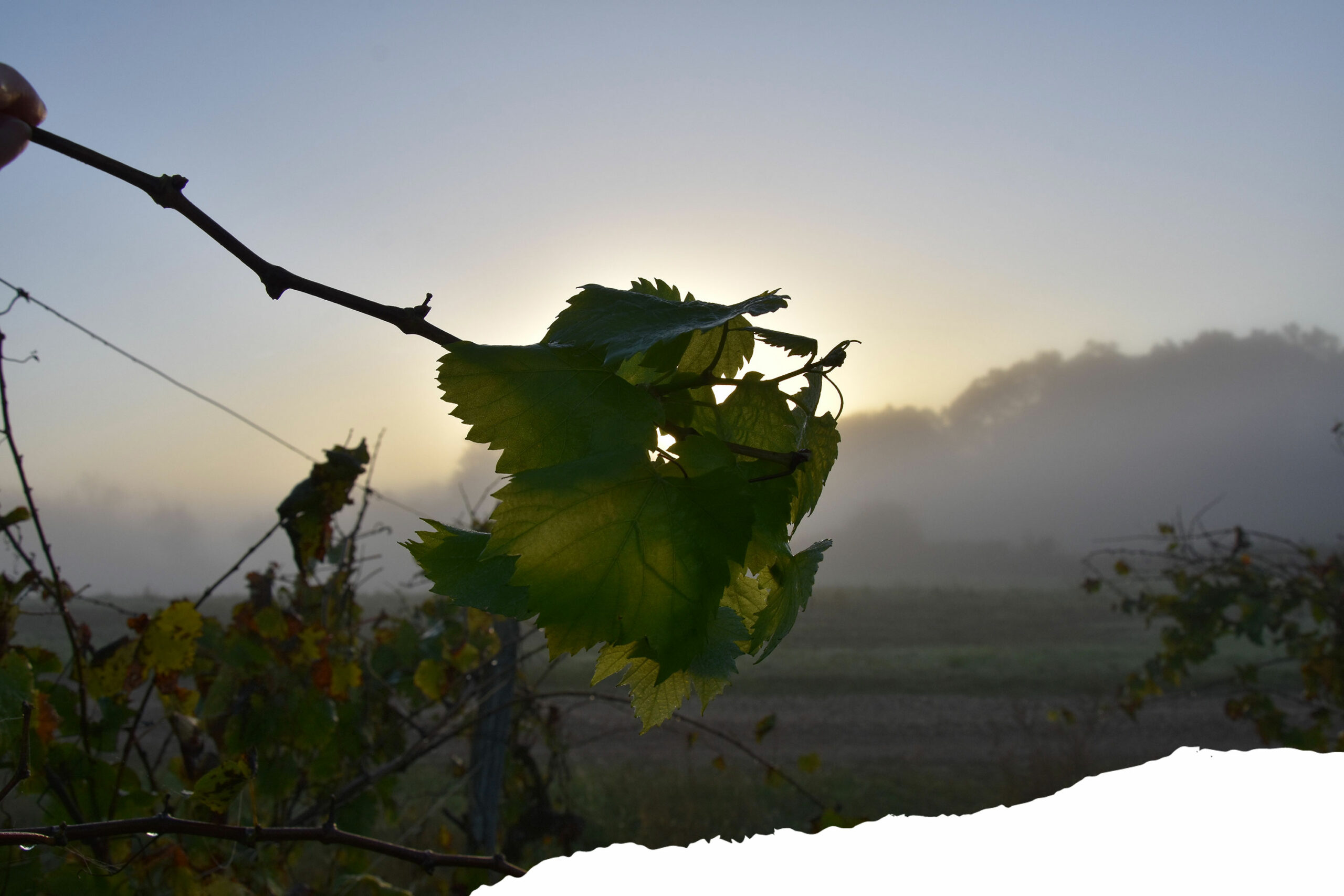
Tell us about the research process to define the iconographic identity of the group?
We have created a series of visuals specific to the group that cannot be confused with those of the brands. The purpose of these images is to give a sense of height and symbolize the group’s unifying role.
Brands mainly broadcast and show product images, we never show products. We have shifted the focus. We talk about the Earth.
How does Frontline establish a brand identity through photography?
It is part of a whole. When we start a project, first we look for a general feeling. It often comes from a first image that we find or that we have in mind. This image evokes a style. From this style we develop a whole visual grammar – graphic, photographic, editorial – that will dress the brand and give it the means to express itself in public.
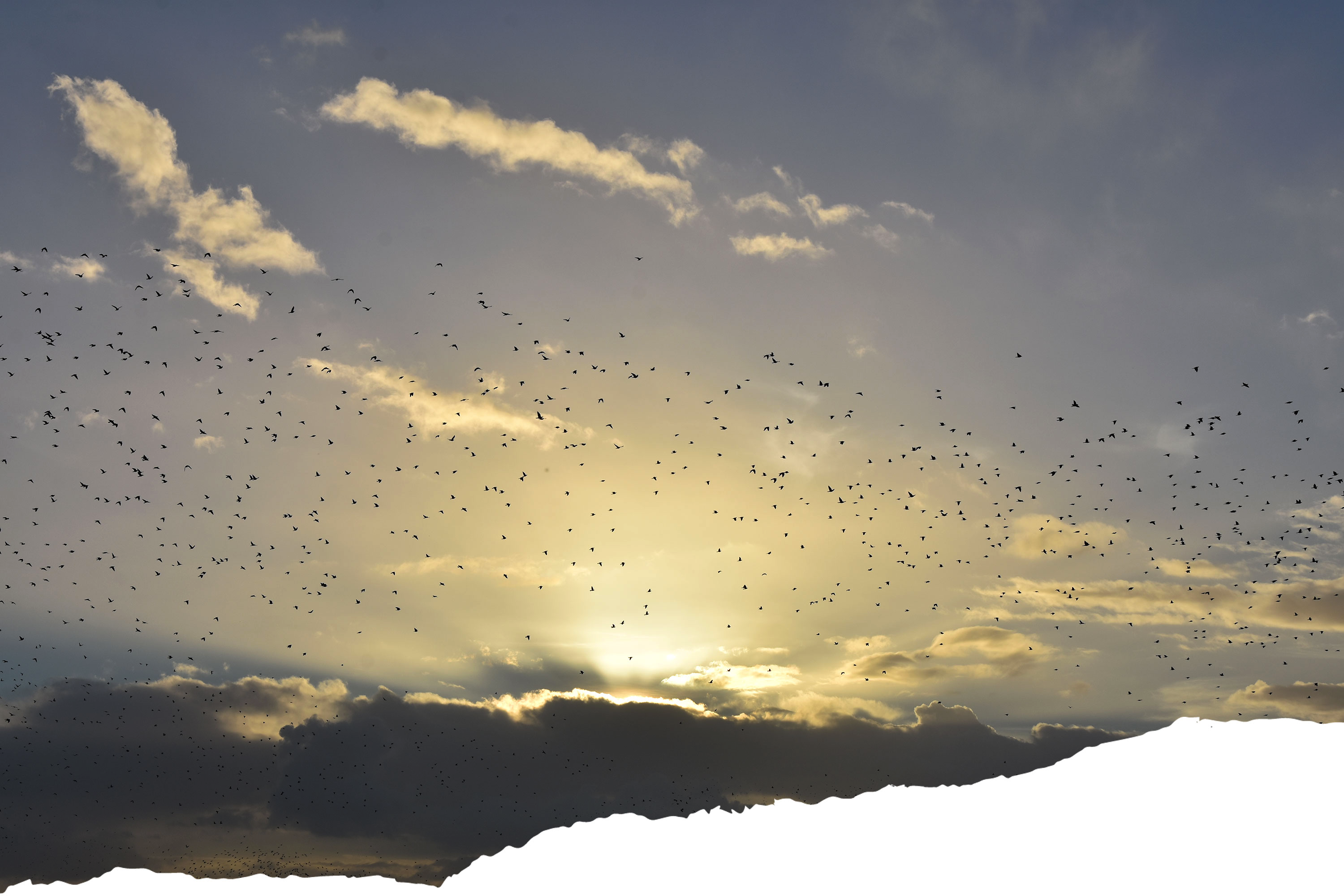
Emma Brante,
Creative director, graphic designer
& founder at Frontline Studio
The French architect Maxime d’Angeac entrusted us with the creation of his visual identity and his entire communication. In this context, Emma Brante, our Artistic Director, conceived the designer’s logo.
I love monograms because I find that typography alone – in the context of a visual communication – is sometimes poor. Of course there are cases where it can work very well, like for Orange Telecom which relies on a color. But I find that a strong emblematic sign fascinates more and marks the minds.
Why did you choose the monogram shape for this logo?
In the context of the graphic identity of the architect Maxime d’Angeac the monogram was perfectly adequate. It has a noble character that comes close to the nature of his work in its aesthetic dimension, his personality, the singular style of his architecture, the luxurious universe of his clients. Finally, the possible play around the particle specific to his name was also a singularity that pushed me to use it and make it a differentiating element.
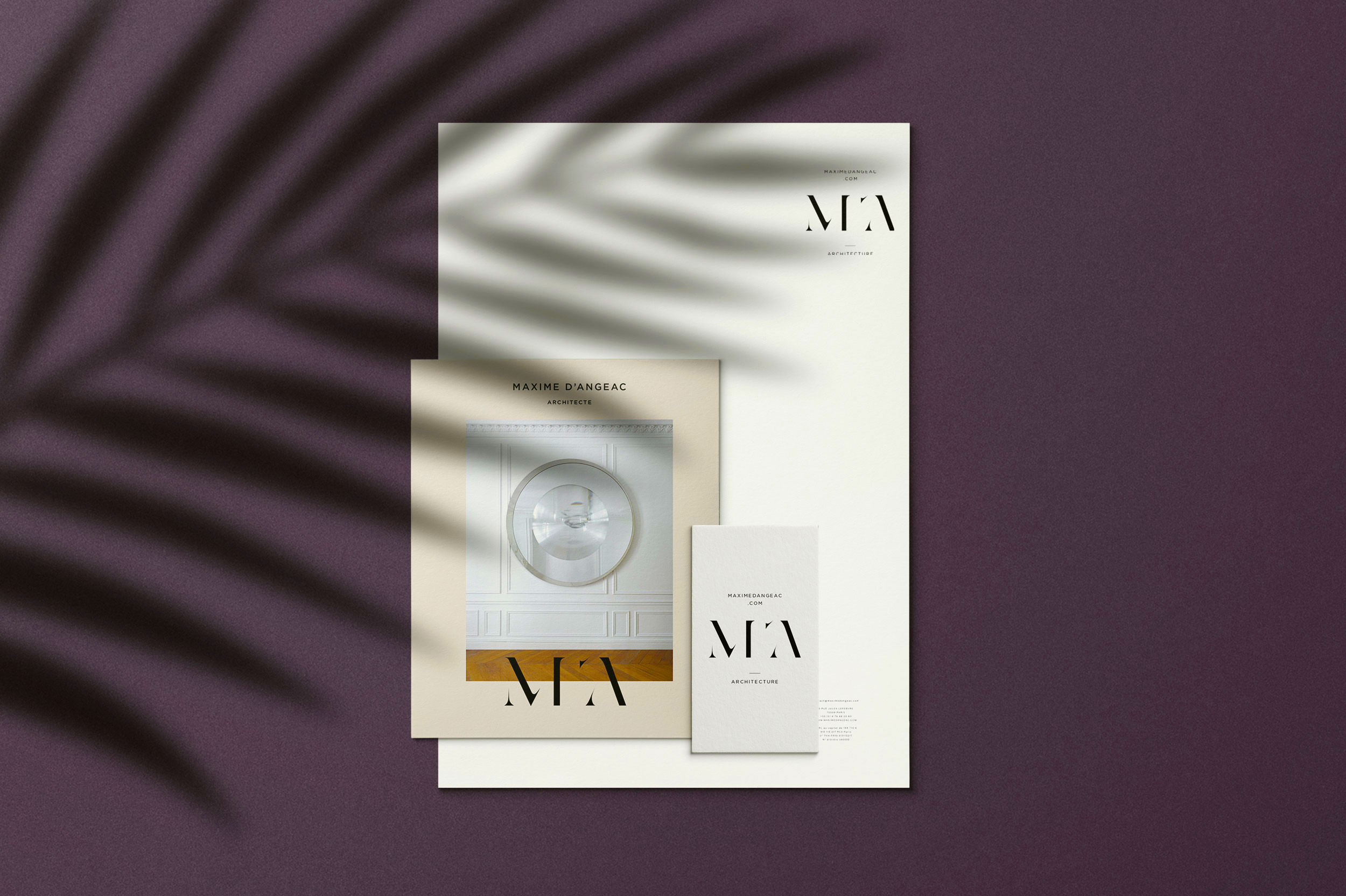
How did you choose the typography?
I drew the letters from a classic typographic structure and then removed certain parts to give the logo a slender character and a contemporary look. In his architecture, Maxime d’Angeac draws on styles from all eras, but he remains an architect who designs contemporary interiors and houses.
How to deal with particles?
There remained to solve the question of the particle its name which moreover is controversial in France. I decided to reduce the particle to the apostrophe alone, giving it a more interesting look than if we had kept the whole thing with the letter D. In the end, it became the strong point of the logo.
Discover the whole project for Maxime d’Angeac here.
Emma Brante,
Creative director, graphic designer
& founder at Frontline Studio
Why did you choose to specialize in logo design?
A logo is a lot of content in a very small object.
Logo design seemed to be the most creative and interesting thing there was for me to craft. Most of the design agencies I had worked for were specialized in brand identity and that didn’t stop them from working on other forms of communication tools like we do today with Masha at Frontline Studio. But one day I realized that I needed to specialize in a specific skill that required a specific know-how. Being able to create a strong and effective brand identity/logo is an added value.
From then on, I took a different approach and started to work on my logos in a more ambitious way without ever backing down from the design difficulties that can be encountered during the process. I wanted them all to have something special. Whether the project was small or large, I decided to give the client as much as I could so that each of my logos would be a strong and remarkable creative object.
When did you decide to focus on logo design and its place in brand identity?
I’ve been designing logos for 20 years but the first one I designed with this in mind was for an architects firm. I had already designed fonts for a logo, notably when I created the logo for the ready-to-wear brand Maje, but I wasn’t used to really designing and transforming typography in a complex way, so I spent a considerable amount of time on this project to make it look original and special.
The client wanted to get away from the usual codes associated with architects. The brief was very original, the partners wanted a conquering, rock-inspired attitude. They were ambitious and that inspired me. They loved the logo of the rock band ACDC. They wanted the same strength for their agency. That was the starting point and I designed the logo around the idea of a skyline.
It’s from that project that I’ve allowed myself to transform, draw, distort typography and get into a territory where few people dare to go. In my opinion, if you touch the design of a letter that is perfectly designed and formatted, you have to make it interesting and meaningful, otherwise you ruin it and there is no added value compared to its initial design.
What has this changed in your work?
Based on a highly identifiable logo, the overall visual identity of a brand can gain power without resorting to aesthetic tactics such as expensive printing or often artificial effects. If a logo is very elaborate, rich and complex, it will not cost more to print. On the other hand, it will give strength to the whole brand identity and everyone will enjoy using it.
This is the interesting point of view in logo design. The idea is to draw out what is strongest about the client and then extract it and put the brand into orbit. Whatever the message is, I always thought it was my job to make it extraordinary and unique. To function, a logo must radiate.
What do you think a logo brings to your client?
Firstly, making a logo is like tailoring a suit for someone. The brand is the central character. Often when we meet the client, they have a suit that is too big or too small, or no suit at all. It’s up to us to get it back to the right size so that the brand is legible, looks sincere and is illuminated in its best light.
Then our job is to increase the brand’s potential for success. Of course, the turnover will not be entirely based on the visual identity, but it will play a role in the bundle of qualities necessary for its success.
With a strong identity, the brand will be more recognizable, identifiable, it will express its heritage, history, reputation and ambitions. A visual identity is an opportunity to make a mark and to multiply the brand’s aura.
Discover our logo collection here





